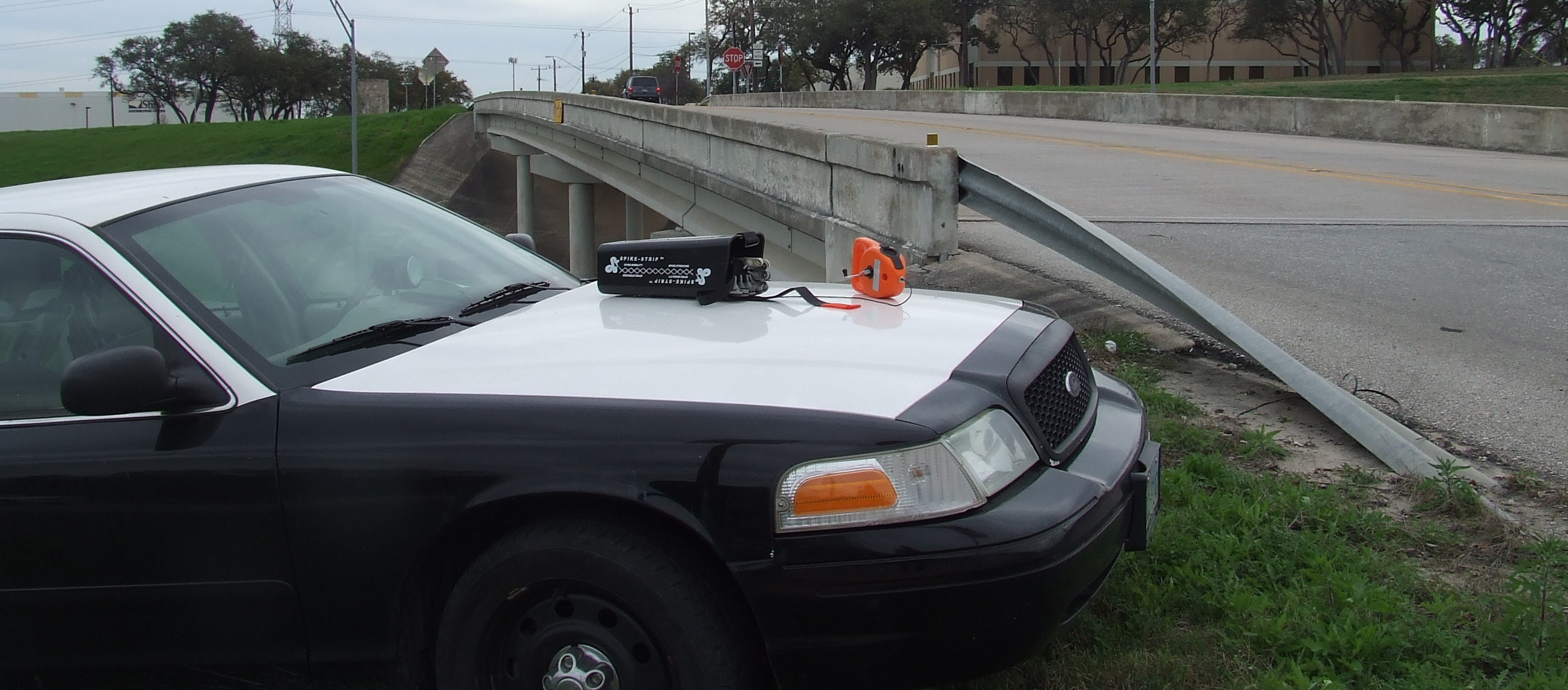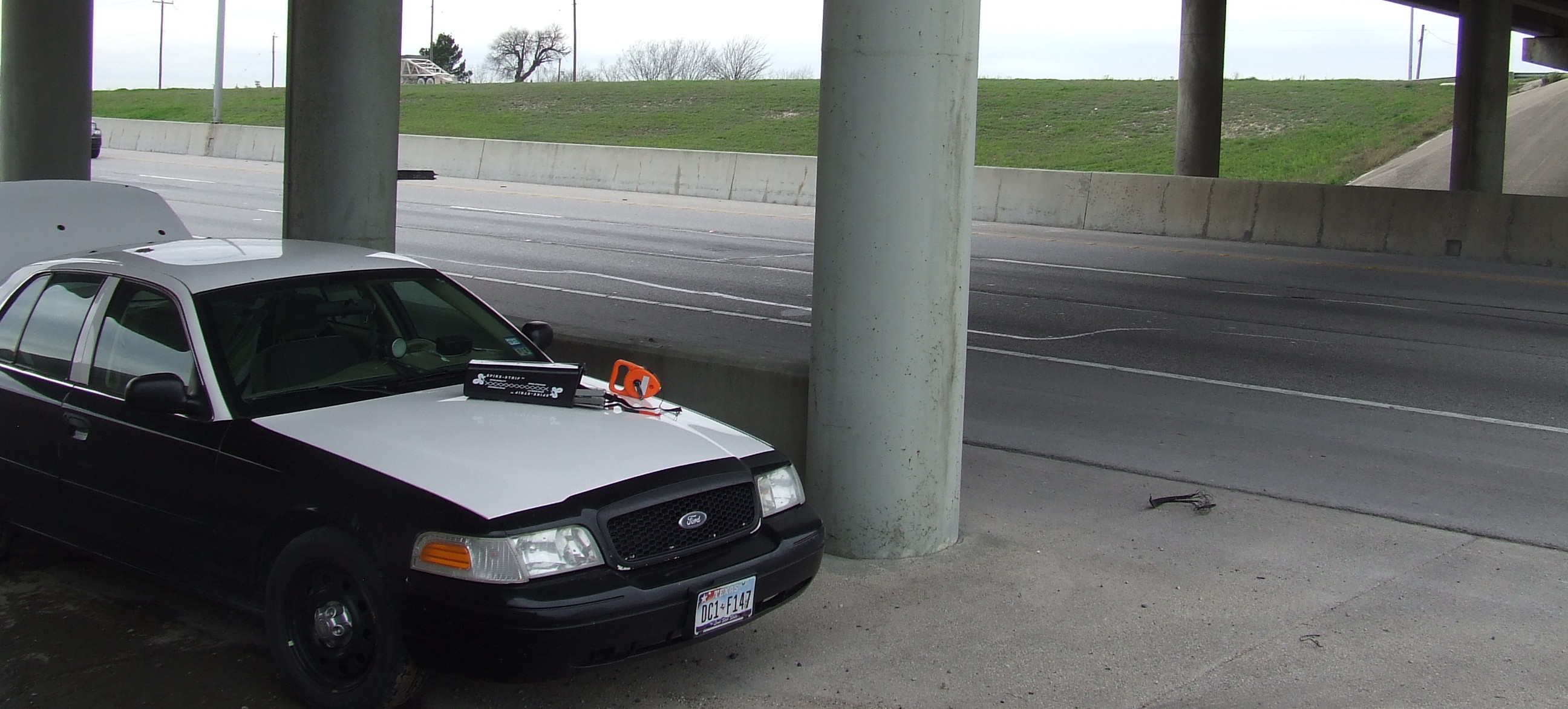Planned Deployment locations
Your deployment location defines your safety and your deployment options. Planning the use of your system, is required: the most advance product technology does not provide a margin of safety.
Deployment Strategy
Based on history of pursuits, take a look inside and outside your area, and develop a strategy with deployment locations ahead of time. Google Maps and other mapping software can provide a birds eye view and they can also zoom in on locations to examine areas for cover. Always physically examine an area to make sure it provides the cover you need.
 Cover versus Concealment
Cover versus Concealment
Lets examine deployment sites and the limits of cover and concealment. This can limit where an officer will park, and how they will deploy.
This locations provides cover for the officer and helps in concealment of the patrol car or motor bikes equipped with spikes. Pre-planned deployment sites, assures that when the officer arrives that cover is available.
 This location provides cover for the officer but less concealment of the patrol car or motor bike equipped with spikes. This Pre-planned deployment site, might be your only option, and you need to make an extra effort to hide the patrol car.
This location provides cover for the officer but less concealment of the patrol car or motor bike equipped with spikes. This Pre-planned deployment site, might be your only option, and you need to make an extra effort to hide the patrol car.
From a research and planning position you should define the types of locations and limit deployment only to specific areas. Your training needs to give officers the tools to discern the deference’s between concealment, cover and protective cover. The Spike Devil training manual provides the information to help facilitate a covert deployment from a safe location.

